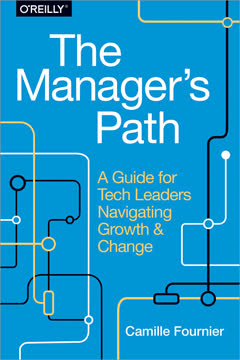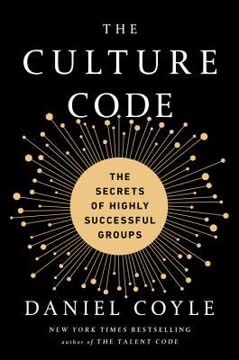Key Takeaways
1. Build Radically Candid relationships through caring personally and challenging directly
"Radical Candor is what happens when you put 'Care Personally' and 'Challenge Directly' together."
Care Personally: This means genuinely caring about your team members as human beings, not just as employees. It involves understanding their personal lives, aspirations, and challenges. Caring personally builds trust and creates a foundation for open communication.
Challenge Directly: This involves providing honest, constructive feedback without sugarcoating or holding back. It means addressing issues head-on and pushing people to improve. When combined with caring personally, direct challenges are more likely to be well-received and acted upon.
Radically Candid relationships lead to:
- Increased trust and psychological safety
- Better performance and results
- More engaged and motivated team members
- Improved problem-solving and innovation
2. Solicit feedback before giving it to create psychological safety
"Don't dish it out before you show you can take it."
Lead by example: As a leader, demonstrate your willingness to receive feedback before expecting others to do the same. This creates a culture of openness and mutual respect.
Techniques for soliciting feedback:
- Ask specific questions (e.g., "What could I do or stop doing that would make it easier to work with me?")
- Embrace the discomfort of silence after asking for feedback
- Listen with the intent to understand, not to respond
- Reward candor by acting on the feedback or explaining why you can't
By consistently seeking and valuing feedback, you create an environment where team members feel safe to speak up, share ideas, and offer constructive criticism. This psychological safety is crucial for fostering innovation, problem-solving, and continuous improvement within the team.
3. Balance praise and criticism to drive better performance
"Criticism sounds best when it's specific and sincere; praise sounds best when it's heartfelt."
Effective praise: Provide specific, sincere praise that highlights what was done well and why it matters. This reinforces positive behaviors and motivates people to continue performing at a high level.
Constructive criticism: Offer timely, specific feedback that focuses on the behavior or outcome, not the person. Provide clear guidance on how to improve and offer support in making those improvements.
Balancing praise and criticism:
- Aim for a higher ratio of praise to criticism (e.g., 3:1 or 5:1)
- Deliver both praise and criticism promptly
- Be specific and sincere in both praise and criticism
- Focus on behaviors and outcomes, not personality traits
- Offer support and resources for improvement when giving criticism
By maintaining this balance, you create a positive work environment while still driving continuous improvement and growth.
4. Understand individual motivations to tailor growth opportunities
"It's your job as the boss to get to know each of your direct reports well enough to understand how each one derives meaning from their work."
Career conversations: Have regular, in-depth discussions with team members about their long-term goals, personal values, and motivations. Use this information to tailor growth opportunities and assignments.
Key elements of effective career conversations:
- Life story: Understand the person's background and key life experiences
- Dreams: Explore their long-term aspirations and ideal future
- 18-month plan: Develop a concrete plan for growth and development
By understanding individual motivations, you can:
- Assign work that aligns with personal interests and goals
- Provide targeted development opportunities
- Increase engagement and job satisfaction
- Improve retention of top talent
5. Avoid labeling people and focus on their current performance trajectory
"Most people shift between a steep growth trajectory and a gradual growth trajectory in different phases of their lives and careers, so it's important not to put a permanent label on people."
Growth trajectories:
- Steep growth: Rapid skill development and increasing responsibilities
- Gradual growth: Consistent, steady performance in current role
Avoid permanent labels: Recognize that people's growth trajectories can change over time due to personal circumstances, career goals, or organizational needs.
Instead of labeling:
- Regularly assess current performance and potential
- Provide opportunities for both types of growth
- Encourage open communication about career aspirations
- Be flexible in adjusting roles and responsibilities as needed
By focusing on current performance and potential rather than fixed labels, you create a more dynamic and adaptable team that can respond to changing needs and opportunities.
6. Drive results collaboratively through effective communication and decision-making
"Your job is to create a culture in which everyone is both challenged and encouraged to challenge you."
The Get Stuff Done (GSD) Wheel:
- Listen: Create opportunities for ideas to be heard
- Clarify: Help sharpen and develop ideas
- Debate: Encourage rigorous discussion of ideas
- Decide: Make clear, timely decisions
- Persuade: Bring others on board with the decision
- Execute: Implement the decision effectively
- Learn: Reflect on results and apply lessons learned
Collaborative decision-making: Involve team members in the process, but be clear about who makes the final decision. This approach leads to better outcomes and increased buy-in.
Effective meetings: Structure meetings to support the GSD wheel:
- 1:1 meetings for individual guidance and feedback
- Staff meetings for team updates and coordination
- "Big debate" meetings for thorough discussion of important issues
- "Big decision" meetings for making key choices
By following this collaborative approach, you harness the collective intelligence of your team while maintaining clear direction and accountability.
7. Create a culture of meaningful guidance and continuous improvement
"Guidance is often called 'feedback,' but feedback is screechy and makes us want to put our hands over our ears. Guidance is something most of us long for."
Impromptu guidance: Encourage frequent, informal feedback conversations that focus on specific behaviors or outcomes. These should be brief (2-3 minutes) and timely.
Elements of effective guidance:
- Be humble: Acknowledge that you may not have all the information
- Be helpful: Offer specific suggestions for improvement
- Do it immediately: Address issues as soon as possible
- Do it in person: Face-to-face conversations are more effective
- Praise in public, criticize in private: This builds trust and respect
Encourage peer feedback: Create opportunities for team members to give each other guidance, fostering a culture of continuous improvement.
Techniques for building a guidance culture:
- Share your own experiences of receiving helpful feedback
- Recognize and reward those who give and receive feedback well
- Use tools like the "Whoops-a-Daisy" exercise to normalize sharing mistakes and learnings
By creating a culture of meaningful guidance, you promote continuous learning and improvement throughout the organization.
8. Implement a fair and transparent performance review process
"Ratings guide variable compensation, promotions, and terminations. The ratings should make the reasoning behind these decisions more transparent to employees, lead managers to calibrate carefully, and generally make the whole process feel simple, transparent, and fair."
Key elements of an effective performance review process:
- Clear performance categories (e.g., results, teamwork, innovation, efficiency)
- Well-defined rating scales (e.g., Not OK, OK for Now, Good, Great)
- Regular feedback cycles (e.g., semi-annual reviews)
- 360-degree input from peers, direct reports, and managers
- Calibration sessions to ensure fairness across teams and departments
- Transparent communication of the process and its outcomes
Balancing performance management and development:
- Separate performance reviews (focused on past performance and compensation) from development conversations (focused on growth and improvement)
- Use performance reviews to drive accountability and fairness
- Conduct frequent, informal development conversations throughout the year
By implementing a fair and transparent performance review process, you create a sense of equity within the organization and provide clear pathways for growth and advancement. This, in turn, drives employee engagement and retention while ensuring that top performers are recognized and rewarded.
Last updated:
FAQ
What's Radical Candor about?
- Management Philosophy: Radical Candor by Kim Malone Scott introduces a management philosophy that emphasizes caring personally while challenging directly to build strong workplace relationships.
- Framework for Feedback: It presents a framework for providing effective feedback, crucial for a productive work environment.
- Avoiding Pitfalls: The book addresses common management pitfalls like Ruinous Empathy, Obnoxious Aggression, and Manipulative Insincerity, offering guidance on avoiding these behaviors.
Why should I read Radical Candor?
- Enhance Leadership Skills: The book is essential for improving leadership skills and creating a motivated team.
- Real-World Examples: Scott shares personal anecdotes from her experiences at Google and Apple, making the concepts relatable.
- Cultural Relevance: Its principles apply across various industries and cultures, making it a versatile guide for modern management.
What are the key takeaways of Radical Candor?
- Balance Care and Challenge: The core message is to care personally for team members while being direct about their performance.
- Build Trust: Trust is crucial for effective communication and feedback, leading to better team dynamics.
- Encourage Open Communication: A culture where feedback is welcomed helps teams thrive and innovate.
What is the Radical Candor framework?
- Two Dimensions: The framework consists of two axes: "Care Personally" and "Challenge Directly," achieving Radical Candor when both are high.
- Four Quadrants: It includes four quadrants: Radical Candor, Ruinous Empathy, Obnoxious Aggression, and Manipulative Insincerity, each representing different feedback styles.
- Managerial Guidance: Managers can use this framework to assess and improve their feedback style.
How can I implement Radical Candor in my workplace?
- Start with Yourself: Solicit feedback about your performance to show you value team input.
- Practice Regularly: Incorporate impromptu guidance into daily routines, offering praise and constructive criticism.
- Create Safe Spaces: Foster an environment where team members feel comfortable sharing thoughts without fear.
What are the dangers of Ruinous Empathy?
- Avoiding Difficult Conversations: Ruinous Empathy occurs when managers avoid necessary feedback to spare feelings, harming performance.
- Long-Term Consequences: It can lead to a culture of mediocrity, where poor performance is tolerated.
- Lack of Growth: Employees may not realize their potential if not challenged directly, leading to stagnation.
How does Radical Candor differ from Obnoxious Aggression?
- Intent Matters: Obnoxious Aggression lacks the personal care essential in Radical Candor, focusing solely on criticism.
- Impact on Relationships: While it can yield short-term results, it damages relationships and trust.
- Communication Style: Radical Candor encourages open dialogue, whereas Obnoxious Aggression leads to fear and resentment.
What is the importance of building trust in management?
- Foundation for Feedback: Trust is essential for effective communication; without it, employees are less likely to accept feedback.
- Encourages Openness: A trusting environment fosters open discussions, allowing team members to share ideas freely.
- Improves Team Dynamics: Trust leads to better collaboration, problem-solving, and innovation.
How can I encourage my team to give feedback?
- Model the Behavior: Ask for feedback on your performance and respond positively to it.
- Create a Feedback Culture: Regularly remind your team that feedback is vital for growth and improvement.
- Use Tools: Implement systems like suggestion boxes or regular check-ins to facilitate feedback.
What are some effective ways to give criticism according to Radical Candor?
- Be Specific: Use the Situation-Behavior-Impact model for clear, actionable feedback.
- Timing is Key: Offer feedback soon after the event to ensure relevance.
- Focus on Improvement: Frame criticism as an opportunity for growth, showing care for the individual's success.
What are the best quotes from Radical Candor and what do they mean?
- “Radical Candor gets measured not at your mouth but at the other person’s ear.”: Feedback effectiveness is determined by how it is received, not just delivered.
- “It’s not mean, it’s clear.”: Being direct is about honesty and clarity, not harshness.
- “You can’t fix what you don’t know.”: Emphasizes the necessity of feedback for identifying improvement areas.
How can I practice Radical Candor with my boss?
- Start with Guidance: Ask your boss for feedback on your performance to initiate a two-way conversation.
- Ask for Permission: When giving feedback, ask for permission first to show respect and open dialogue.
- Focus on Small Issues: Start with minor feedback to gauge their reaction and build trust.
Review Summary
Radical Candor receives mixed reviews, with praise for its practical management advice and criticism for its Silicon Valley focus. Readers appreciate the framework of caring personally while challenging directly, finding value in its guidance on feedback and team dynamics. However, some criticize the author's name-dropping and repetitive content. The book is seen as particularly useful for new managers but less applicable outside tech industry contexts. Critics also note the book's potential misuse to justify aggressive behavior.
Similar Books










Download PDF
Download EPUB
.epub digital book format is ideal for reading ebooks on phones, tablets, and e-readers.





